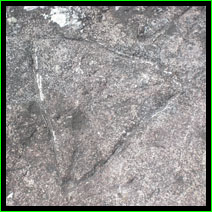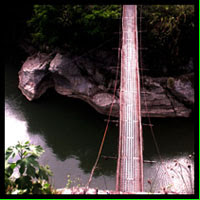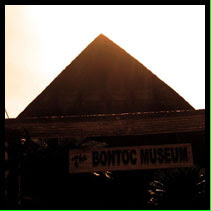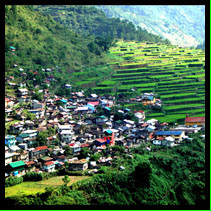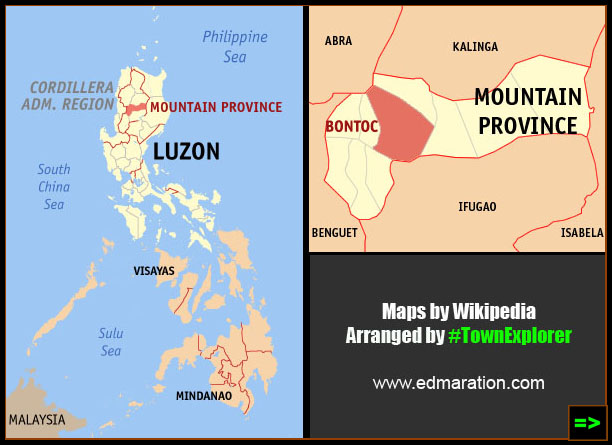"Each second counts, and each second that has passed means losing another second of their generation."

Bontok Woman with tattoo, turban and traditionally woven skirt
I spent a time just sitting beside a street in #BONTOC and observe, feel the place, see people, appreciate people. Learn new ways and understand the old ways. This was a joyful way of spending time, wisely. I didn't need to stay in a designer hotel to do this because the learning is located outside, there at the street.
The town of Bontoc is a cultural treasure in itself. But the ways of the past is slowly diminishing away from the bracket of what is considered normal this age. Who would dare wear a tattoo on the upper extremities, then wear a turban, colorful porcelain beads around the neck and a skirt only used nowadays as a costume in school activities?
![Bontok Women]()
The town of Bontoc is a cultural treasure in itself. But the ways of the past is slowly diminishing away from the bracket of what is considered normal this age. Who would dare wear a tattoo on the upper extremities, then wear a turban, colorful porcelain beads around the neck and a skirt only used nowadays as a costume in school activities?

A culture that's turning blurry
These women were born to unwittingly set the border of what is old and what is new. A lot of young girls in Bontoc has turned fashionistas, mimicking what their favorite popstar is wearing and these old Bontoc women has just set, obviously, the borderline.
Their generation is slowly, but surely ending soon. Bye tattoos, bye snake-bone coronets. Those artworks could be strange as it may seem, but honesty, just culturally fascinating.
Saying bye to bright, colorful, predominantly red skirts; bye turban, oh where have all the turbans gone? Girls now wear make-up, treat their hairs for good to make it shiny and straight and put highlights. Well, no issue for that. I'm just saying that the tradition is surely decaying, from head to foot; replaced by new ways, new culture, trendy pop culture.

With three Bontok Igorots, the gap in culture is wide clear, right?
Meeting the last generation of this tribe that still overtly wear the marks of their identity was priceless. The tradition and culture is signing off swiftly that it can no longer handle the strength and influence of new elements signing up to the social database of new trends in lifestyle and living.
Having photographed these people is like a school graduation accomplishing something. I know, once these old women are gone, it will be forever. Unless a new civilization shall arise with the same format in 6-digit years time. And, the extinction of their generation is just certain. They lived to put an end to something they are not supposed to be doing. It was fate that set them to live this way.

Wearing the beads with pride, some use snake bone, a very rare scenario
How I wish they understand what's happening around; on why young girls are not following their ways. It was a lifetime of continually shrinking space of culture. Each second counts, and each second that has passed means losing another second of their generation.
Their time is now so thin. It seems like the new generation is not aware of what they are losing. The new ways have just arrived, alluring everyone with glitz and glamour, encouraging everyone to get out of the old world and it appears that no one (or a little, if any) is brave enough to save the dying heritage.

Lolo Bernard, 2nd oldest Bontok man in Alab Oriente
While in a village called ALAB ORIENTE, I met Lolo Bernard. He speaks in his native dialect while the younger men speak Ilocano or Taglish. My ears were focused to this old Bontok man. Every word he was saying is just beautiful. I can't understand, but beautiful to my ears. It is about my love for learning new things.
He also has a head-wear with suako in between his lips. No one in the village do it now. Lolo Bernard's generation is so fragile. In every air he breathes in with that suaco also means a generation breathing the last air stored for them.

With a beautiful elder in Bontoc wearing batek

With Lolo Bernard, 2nd oldest in Alab Oriente
Spending a short moment with them was like running on a long road of gold. That's how precious it was. They are the last and I'm just lucky to have seen them.
After 10 years, this experience would become on it's rarest, and more years, could be an extinction. These people are on 80+ years old range. Well, the Igorot culture will still be there. They have loved their identity so much. I appreciate that. But the culture that brings visual feast, overtly, before the eyes of many will never be the same again. However I'm sure it will still show up -- but that would be only on books, and these photographs I have taken ./end
*ALAB ORIENTE DOCUMENTARIES SUB-SERIES | 1

Alab Oriente, Bontoc | An Ancient Village with Sacred Grounds
TEASER: "Prehistoric mountain dwellers inhabited this place leaving a mark that became an evidence of their existence." | 2
Mt. Gotong, Mt. Data | Hiking the Mountains of Myths and Urban Legends
TEASER:"...there is still a little regret in me that I didn't just even notice the summit of the first real mountain I ever climbed." / Photo: Photo: Mt. Gotong | Bontoc, Mountain Province | 3
Alab Petroglyphs | Prehistoric Etchings, Mind-Boggling Patterns
TEASER: "It was carved inside a space of time from another dimension of civilization even far from the dawn of Christianity..." | 4
Finding Shelter in Alab's Mt. Data: Happy Memories with Strangers
TEASER: "By time, I may forget them, so, I have to write a story about that experience that I may still remember those precious memories every time I do the recalling of happy moments." | 5
Ganga Burial Caves | Mystical People, Mysterious Grave
TEASER: "I experienced goosebumps upon entering this area of dead bodies that made me feel I was in a different dimension." | 6
Evidence of Jar Burial in the Philippines as seen in Bontoc
TEASER: "They left an evidence to let us know they once existed but the complete details on why they have to do this is a thing only known to them." | 7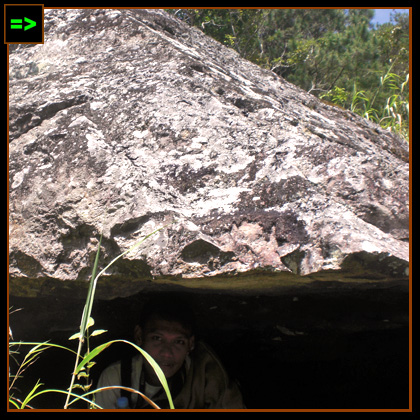
Ganga House, the Ruined Pig Pen and Goodbye Mystical Mountain
TEASER: "Still, it is significant because it is an ancient mark, an evidence of prehistoric civilization. The trek continues..." | 8Bontoc #TownExploration Series
Map showing the Location of #Bontoc
Click map to view latest articles covering Mountain Province

MORE POSTS FROM THIS CATEGORY: *PEOPLE*


Finding Shelter in Alab's Mt. Data: Happy Moments with Strangers
TEASER: "By time, I may forget them, so, I have to write a story about that experience that I may still remember those precious memories every time I do the recalling of happy moments."

Cultural Experience with AMMUTAN TRIBE of Manabo
TEASER: "There was a language barrier but the mere fact that I am witnessing a portion of their culture has made me think that these people are simply unique and blessed!"+copy.jpg)
+copy.jpg)
Meeting the Oldest Palaspas Weaver for Palm Sunday at 74 years old
TEASER: "All I can see to the face of Lola Conchita is the sincerity in her craft -- that she loves it so much in spite of her age. She started weaving Palaspas when she was 64 years old and at that age, she finds the "need" to do it to earn for a living."

The Trike Toploader Kids of Sallacong
TEASER: "I was following their way and even the sunset will signal that they have to take a rest for now, the sunrise will again come tomorrow giving them new strength, new hope and a new day to gather more woods for their daily living."

The People I Met Along the Mestizo River
TEASER: "Their lives start to revolve with these things that many of us living at the cities and working at the office don't know or not aware at all."

Baguio City | Romance at the Burnham Park
TEASER: "The flowers around the Burnham Lake seemed like smiling and cheering as they too witness this precious moment in their life time as me personally, is also cheering deep inside my heart as a witness how successful they are in managing a long distance relationship."+copy.jpg)
+copy.jpg)
Tabaco City | Bonsai Kids: What Future Awaits Them?
TEASER: "I can feel the pain, the feeling of inferiority but the motivation for success and outlook for dreams is very high and will remain high."





